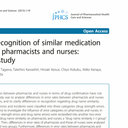Prenatal exposure to 3,3',4,4',5-pentachlorobiphenyl (PCB126) promotes anxiogenic behavior in rats.
Kata kunci
Abstrak
Polychlorinated biphenyls (PCBs) are environmental contaminants that have adverse effects on the endocrine and nervous systems. As they are still detected in breast milk and adipose tissue in humans, the accumulated PCBs may transfer from mothers to children and damage central nervous system. It is revealed from epidemiological studies that cognitive and motor functions were damaged in children born to mothers who ingested PCBs-contaminated foods. However, it remains unclear whether prenatal exposure to PCBs affects emotionality. In the present study, we therefore examined the effect of prenatal exposure to 3,3',4,4',5-pentachlorobiphenyl (PCB126) on emotionality in rats by focusing on anxiogenic behavior and response of the hypothalamus-pituitary-adrenal axis to stress. Pregnant rats were treated orally with PCB126 at a dose of 30 microg/kg or corn oil, its vehicle, on gestational day 15, and their male offspring were subjected to the following experiments at 4-5 weeks old. In an open field test, rats with prenatal exposure to PCB126 showed anxiogenic behavioral responses, including decrease in time spent in the center of an open field and the number of rearings and extension of grooming duration. Interactive behavior, which is an index of anxiety level, was shortened in the social interaction test. The increase in the serum corticosterone level induced by forced swim stress was facilitated by prenatal exposure to PCB126. This evidence suggests that PCB126 may exert anxiogenicity on the offspring of exposed dams, and dysfunction of the hypothalamus-pituitary-adrenal axis may at least in part contribute to this abnormality.


